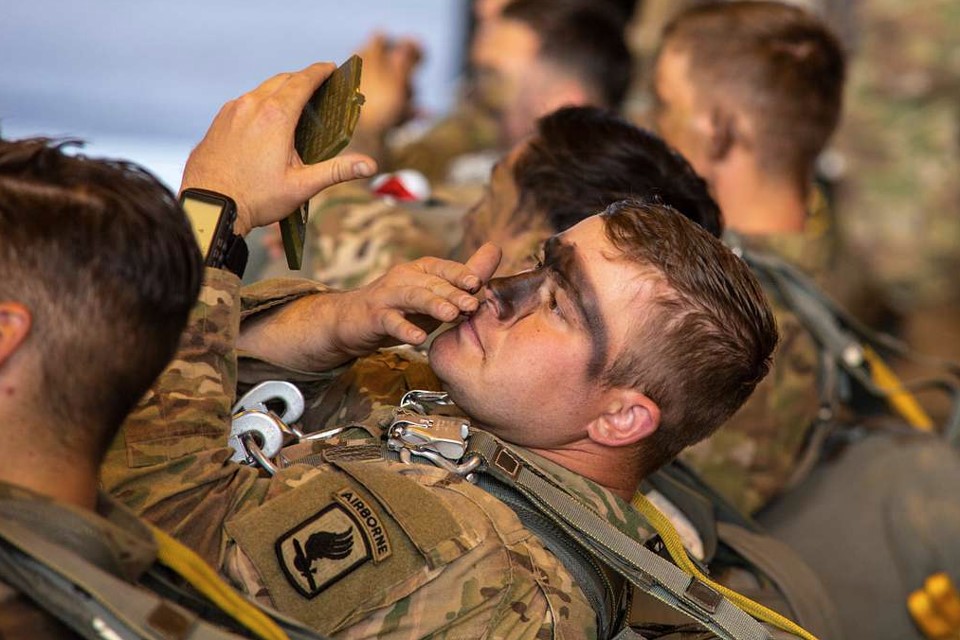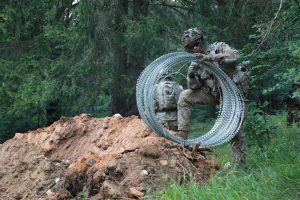Leadership Camouflage – CSA Article of January 2025

Organizational norms often elevate leaders to near-mythical entities, as if they exist in a realm entirely separate from the very teams they are tasked to direct. Leaders are often viewed solely as organizational decision-makers, and rarely do you hear a leader characterized as a teammate, colleague, or even partner or collaborator. This distinction between leader and teammate appears to be a subconscious inference separating those who make up the team—the workers, and those who lead it—the decision-makers. What if the conventional gap we place between leaders and teammates is actually counterproductive? It’s time to consider the revolutionary power of ‘leadership camouflage’— The ability of a leader to embed themselves within the team so that they become indistinguishable.
In Sam Walker’s book, The Captain Class, he posits that the defining factor of a great team is not necessarily its talent or coaching but the distinct qualities of one person. Walker identifies that the foundation of any winning team is within the collective. However, he also found a singular element strongly correlating renowned sports teams and their unprecedented winning streaks: one particular teammate’s character.
This teammate? The team captain. The captain is a player who is not detached from the main element. They are not a coach or a manager and are not serving in traditional positions that might regard them as the decision-maker. Instead, the team captain is viewed as a participator—an integral member of the team who cannot be separated from the main body.
I argue that effective modern leadership is about blending in, not standing out. Hierarchies and positional authorities are increasingly becoming ineffective. The conventional image of a leader, and perhaps especially an Army leader—elevated and isolated, dictating directions to a sizable audience—misses the importance of the collective. In today’s volatile landscape, Army leaders should be deeply embedded within their organizations, making their presence felt from the inside out.
Great leaders, in and out of our Army, understand that they need to create less separation between themselves and their teammates; they camouflage—blending in as part of the team. Doing so offers a litany of benefits to their organization:
Your teammates will work harder for you and the organization when they feel their leader functions as a team member—fundamentally on the team, as opposed to being known as the figure who leads the team.
Almost instinctively, teammates always observe their leader’s behaviors, this especially true of junior soldiers and their leadership. They seek evidence to assess whether or not they contribute to the team’s workload. In your teammates’ eyes, the more you as a leader are willing to help the team, even at the lowest levels, the more you care about them. Once your teammates have determined that you care about them through your servant leadership and willingness to work for the team, they will —almost inevitably—be willing to work harder and serve the organization.
Your teammates will resist their natural inclination to fake or put on a façade in your presence; their familiarity with your presence will enable them to be authentic and truthful.
When leaders in our Army, normalize their presence, they gradually chip away at their teammates’ natural defenses and potential trust boundaries. Often, teammates feel distant from their leaders because of the existing power dynamics. The leader, usually called “the boss,” has the authority to write evaluations, operations orders, and award recommendations. This gives the leader real power over their team, which can shape and control how teammates engage with their leader. Therefore, leaders must engage often and serve on the team to reduce or eliminate this inherent separation that often arises from teammates viewing their authority as a threat.
Leaders will become members of the in-group, which means they will be privileged to know where the real problems are, so they can resolve them quickly.
Although issues that arise should be fixed at a level commensurate with the impact of the problem, when leaders are accepted into the in-group, they can act as internal mentors to their teammates to help achieve an outcome that is healthy for the entire organization. Furthermore, leaders can help anticipate and identify conflicts that impede organizational movement and growth. Often, leaders diagnose problems without understanding the whole picture. Just as a basketball captain—a leader and participator—can feel the rhythm of the game and spot weaknesses in real-time, a camouflaged leader gains firsthand insights into what’s holding the team back.
Leaders will authorize their teammates to take more ownership of their roles and shape their decisions to consider the best interests of the larger organization.
At every opportunity, a leader should reinforce when teammates take guidance and execute it in their name; this is ownership. Present leaders are more likely to encounter these instances where they can take time to authorize these acts. Additionally, leaders can use their access to their teammates to help build perspective. Frequently, your teammates can only see what they have access to, which will often be asymmetric and incomplete compared to their leaders. Thus, a leader’s presence can help bridge their teammates’ understanding, enabling them to make more thoughtful decisions at scale for the organization’s benefit.
Regardless of where you serve, as leaders, we must concede that the landscape of leadership in our Army is shifting. Mission Command and the empowerment of decentralized execution demands agile and flatter organizations. These changes are revamping hierarchical structures and minimizing the positional authority of one leader. The most effective leaders understand how to change their wardrobe to fit the environment they serve. Today’s leaders must wear camouflage. Doing so will elevate their organizations to perform at the highest levels. To stand apart, you must first blend in; challenge the status quo and lead from within, not above.
Author Biography
MAJ Shawn Robertson is a military intelligence officer who has served in the 173rd Infantry Brigade Combat Team, the National Security Agency, West Point, and the United States Army Special Operations Command. MAJ Robertson also holds a Master of Arts in Organizational Psychology from Columbia University and a Master of Arts in Defense and Strategic Studies from the Naval War College.
Related Posts

Going Off Script, But Staying on Track: A Career Guide for Junior Leaders
Intro I walked into LTC Tomi King’s office as a new 2LT in his formation. We discussed all the normal talking points in that initial counseling – family, where I …

Fighting as an Enabler Leader
(U.S. Army Photo by Cpl. Tomarius Roberts, courtesy of DVIDS)Enablers provide capabilities to commanders that they either do not have on their own or do not have in sufficient quantity …

Defeating the Drone – From JMRC’s “Skynet Platoon”
If you can be seen, you can be killed—and a $7 drone might be all it takes. JMRC’s Skynet Platoon discuss their TTPs to defeat the drone.
